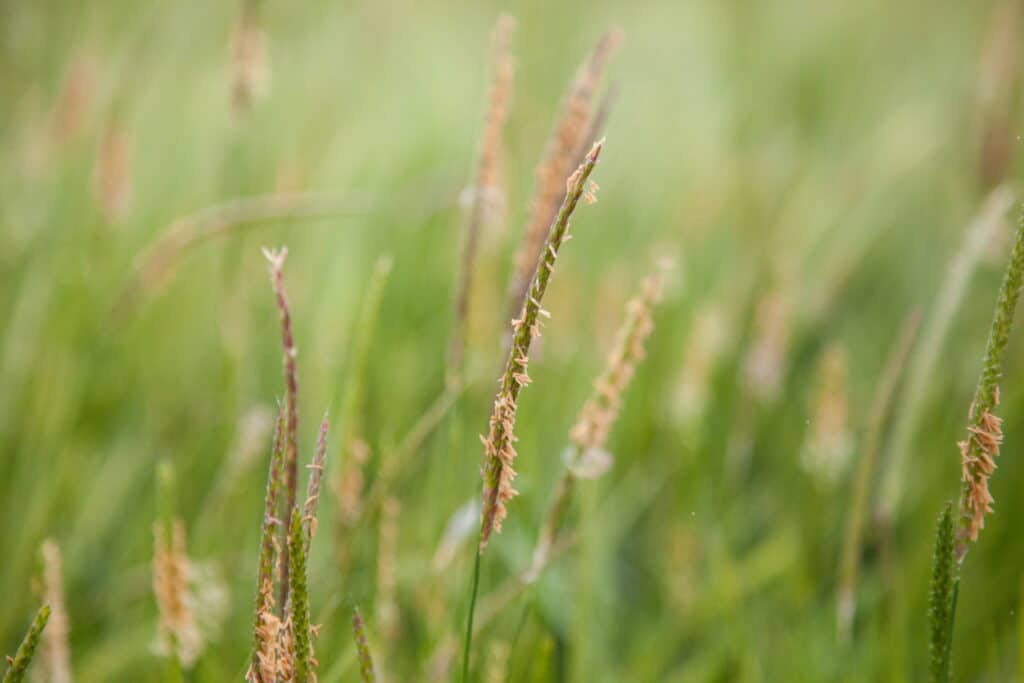Challenging convention on black-grass control – Farmers Guide
Black-grass populations are changing, therefore so must the ways we control it, as latest research at the Hutchinsons Cambourne black-grass demonstration shows ...
The ability of black-grass to evolve and adapt to the management practices we throw at it is evident at South Sea Farm, the home of the 40ha demonstration site set up last year, and kindly hosted by the Clear family.
As growers attending last June’s open day discovered, emergence patterns are shifting beyond the classic September/October peak, and while there has been much success in managing out autumn populations over the past decade, those that remain present a stern challenge.
Indeed, overwintered plants that have not been exposed to crop competition or herbicides, are regularly bigger and stronger, with far more tillers, typically up to 35-45 per plant, says Hutchinsons agronomist, Tom Smith.
So while actual plant numbers may now be relatively low, at say 30-50/m2, problems can look significantly worse in the field once heads start appearing above the crop.
“Plant numbers are lower, but their tillering capacity is quite incredible,” he says.
Emergence patterns are also clearly changing as black-grass has adapted to years of targeted autumn controls, he adds. “It’s now almost like a conveyor belt of constant germination. Even during the very dry spell in March and early April, we were still finding newly emerged black-grass, predominantly in between the wide rows.”
Spring-emerging black-grass should-in theory at least-be less competitive than large overwintered weeds, but even so, it cannot be ignored. “They could well get out-competed as the crop closes in, but it’s something we will be monitoring”
Taking a fresh approach
The trends identified at the Cambourne site are representative of many other farms across the country, so to help growers tackle this evolving threat, Hutchinsons is exploring a range of agronomic strategies.
This includes field-scale comparisons of different low disturbance and zero tillage establishment approaches to see how they affect subsequent black-grass numbers and crop establishment; a small plot herbicide trial comparing a host of pre-em and post-em strategies (products and timings); a glyphosate trial; evaluation of placement fertilisers; and other work examining the impact of Sustainable Farming Incentive (SFI) options on black-grass numbers.
The farm is in the SFI 2023 scheme, but narrowly missed out on joining SFI 2024 before it closed suddenly in March. While the scheme’s future is still unclear, it is likely to remain an important source of income on many English farms, so understanding the impact certain options can have on weed burden is crucial, Hutchinsons technical manager, Dick Neale, says. “There’s little point receiving money from the SFI if it’s fundamentally making black-grass control worse. We need to better understand how SFI income can be incorporated onto farms to help build a profitable rotation, whilst also addressing grassweed control, principally black grass.”
The most impactful option being investigated within SFI 2023 is companion cropping with beans, Mr Neale continues. A spring beans with spring barley trial last year revealed a notable reduction in black-grass pressure, so this year that approach is being repeated, this time with beans and winter wheat.” The thinking is that by adding diversity of rooting and biomass, we can help the crop compete with black-grass. But we’re also looking much more closely at the fine details, such as how these crops are established.”
Can blends reduce black-grass?
Another approach to build diversity-and potentially help reduce black-grass pressure-is the use of wheat blends.
“We know black-grass spends the winter developing a massive root system, before it then outcompetes wheat in the spring, so we want to see if a blend can give us a diversity of root systems within the soil to help crops compete with black- grass,” explains Mr Neale.
Alongside a field trial, special clear plastic grow-tubes containing different wheat varieties will allow a visual comparison of rooting characteristics.
Identifying emergence zones
Understanding where black-grass is emerging from within the soil profile is fundamental to managing the issue, so to better understand that, this year Mr Neale has taken soil samples from three zones, 0-2in, 2-4in, and 4-6in deep. These have been placed in trays, allowing him to observe what grows from each layer.
“We got one or two weeds from the top 2in, but zero black-grass. From the 2-4in layer, black- grass and brome emerged, while from 4-6in, came all the oil-containing seeds, such as charlock and oilseed rape.
“It was very clear the grassweeds are coming mainly from the 2-4in layer, which is no great surprise as for the last 8-10 years, this farm has been following the principles we set out at Brampton, which is to only cultivate the top 2in of soil, to avoid bringing up deeper seed, hence it’s still there.
“By understanding where your black-grass is, you can then manage it accordingly.”
See for yourself
Hutchinsons Cambourne black-grass demonstration site will open its doors on 4th June, giving growers the opportunity to see the trials, discuss black-grass strategies and also hear from a leading expert on the impact of effective field drainage.
See the events section at www.hutchinsons.co.uk for details and booking information.
